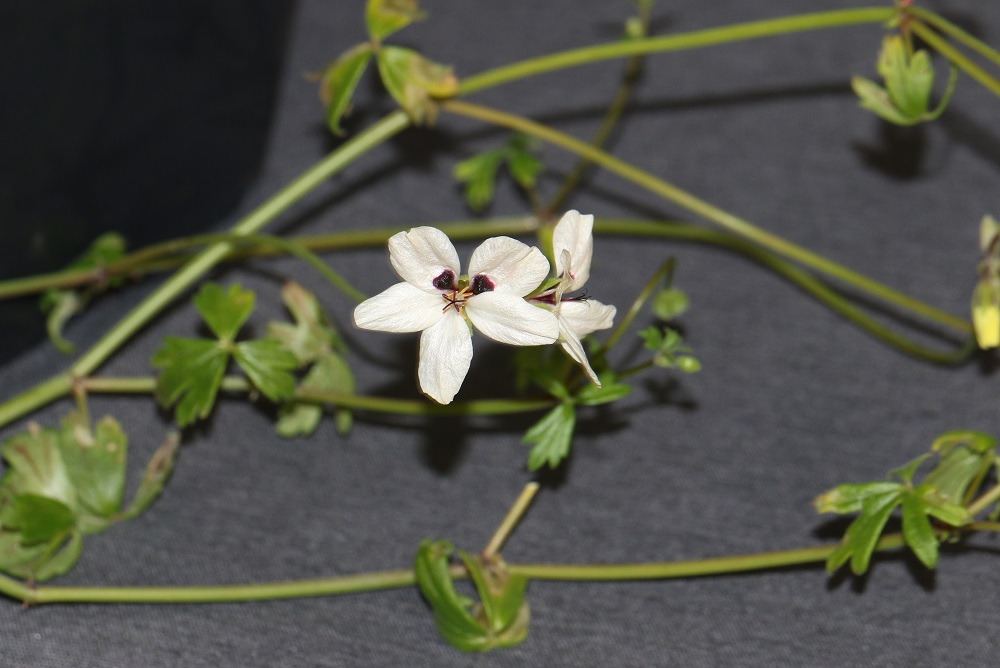P. tenuicaule
русскийP. tenuicaule R. Knuth (1938)
genus: Pelargonium L’Heritier in Aiton (1789: 417)
subgenus: Magnipetala Roeschenbl. & F.Albers (2014)
section: Jenkinsonia (Sweet) De Candolle (1824:658)
The epithet tenuicaule (lat.) is indicative of the slender stems and branches of this species.
Plant with small tubers and straggling spreading stems. Leaves slightly fleshy, pale green, but more or less orbicular in outline, with 5 shallow toothed lobes, to 4 cm or more across; petiole usually much longer than lamina; stipules 3-4 mm. Flowers opening cream but becoming white, large with a rounded, shallow-cupped shape, in pairs on long branching inflorescence; upper petals with very prominent dark purple blotch, spathulate, c. 20 x 10 mm; lower petals unmarked, diamond-shaped, sometimes slightly larger than upper; hypanthium up to 2 cm; pedicel 2 5 mm; fertile stamens 7 (4 long, 1 medium, 2 short, pinkish-purple becoming darker towards apex; anthers wine-red; pollen orange. Mericarps: bases ca. 4 mm long, tails ca. 20 mm long.
Pelargonium tenuicaule. Plant and photos E. Ioganson
Flowering time has been recorded as from September to December, but this and the size of the flowers are probably highly dependent upon rainfall. Indications are that the plants die back completely after flowering. The extensive system of small underground tubers ensures that the plant survives prolonged droughts and depredation.
P. tenuicaule is known from a restricted area along both sides of the lower reaches of the Orange River. Topographically this area is rather broken, with deep rocky gorges and steep rises. It experiences a meagre average rainfall of less than 100 mm during the winter months. P. tenuicaule has been reported as growing on rocky slopes, cliff faces, and also on flats; presumably always among rocks.
Geographical distribution of P. tenuicaule
P. tenuicaule is easy to propagate from cuttings and by transplanting, and presumably also from individual tubers.
Despite its attractive flowers, this plant can become rather untidy but is ideal for growing in a hanging basket. It may be propagated from the small tubers but must be given a very well- drained soil, limited water and bright light.


References:
- Van Der Walt, J.J.A., Albers, F., Gibby, M., Marschewski, D.E., Hellbrügge, D., Price, R.A. & Van Der Merwe, A.M. (1997) A biosystematic study of Pelargonium section Ligularia: 3. Reappraisal of section Jenkinsonia. South African Journal of Botany 63: 4–21.
- http://redlist.sanbi.org/species.php?species=1976-320
- Van der Walt, J.J.A., Forster, P.J., 1988, Pelargonium of Southern Africa, Vol. 3, National Botanic Gardens Kirstenbosch, Kirstenbosch, 149 pp.






























